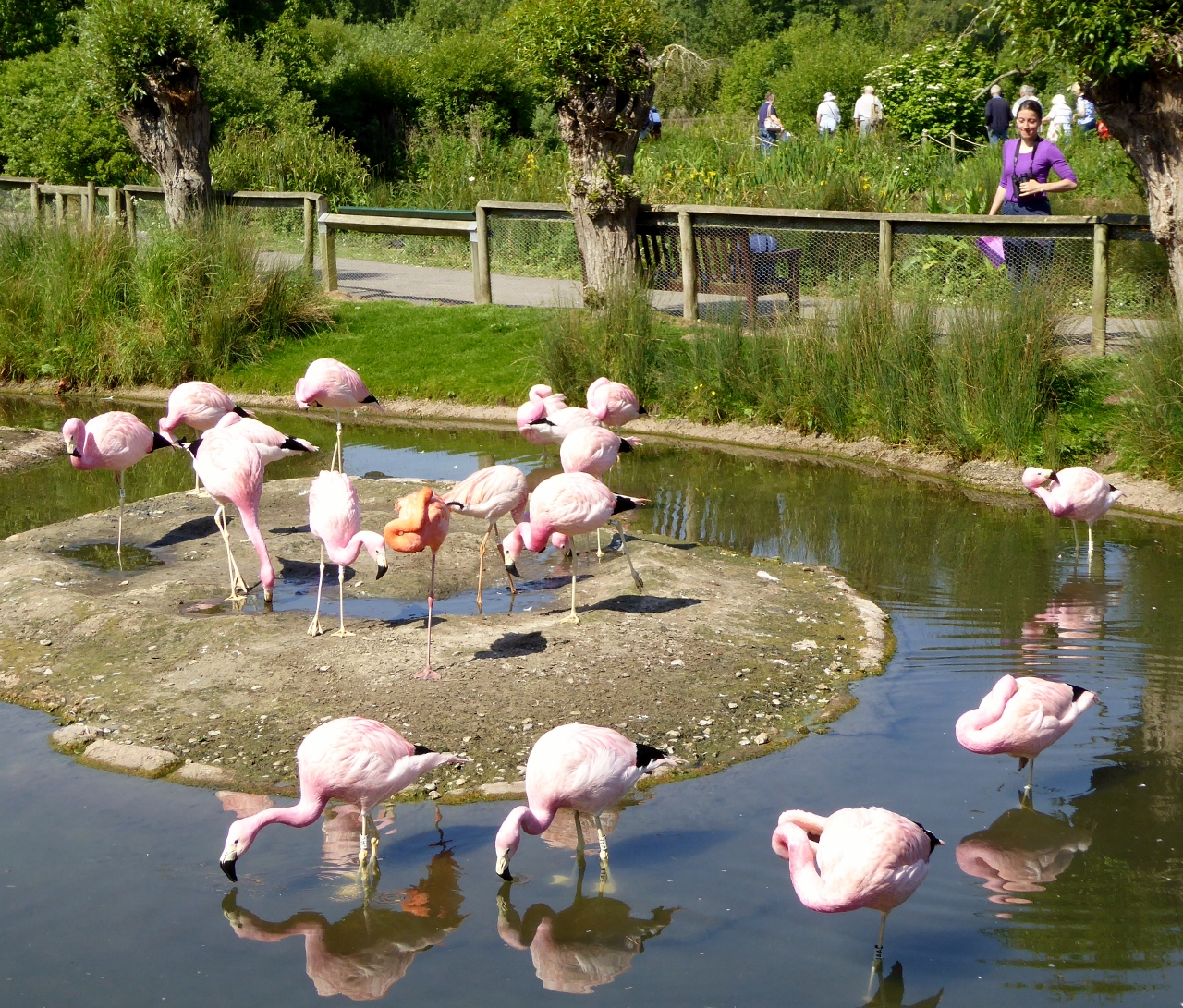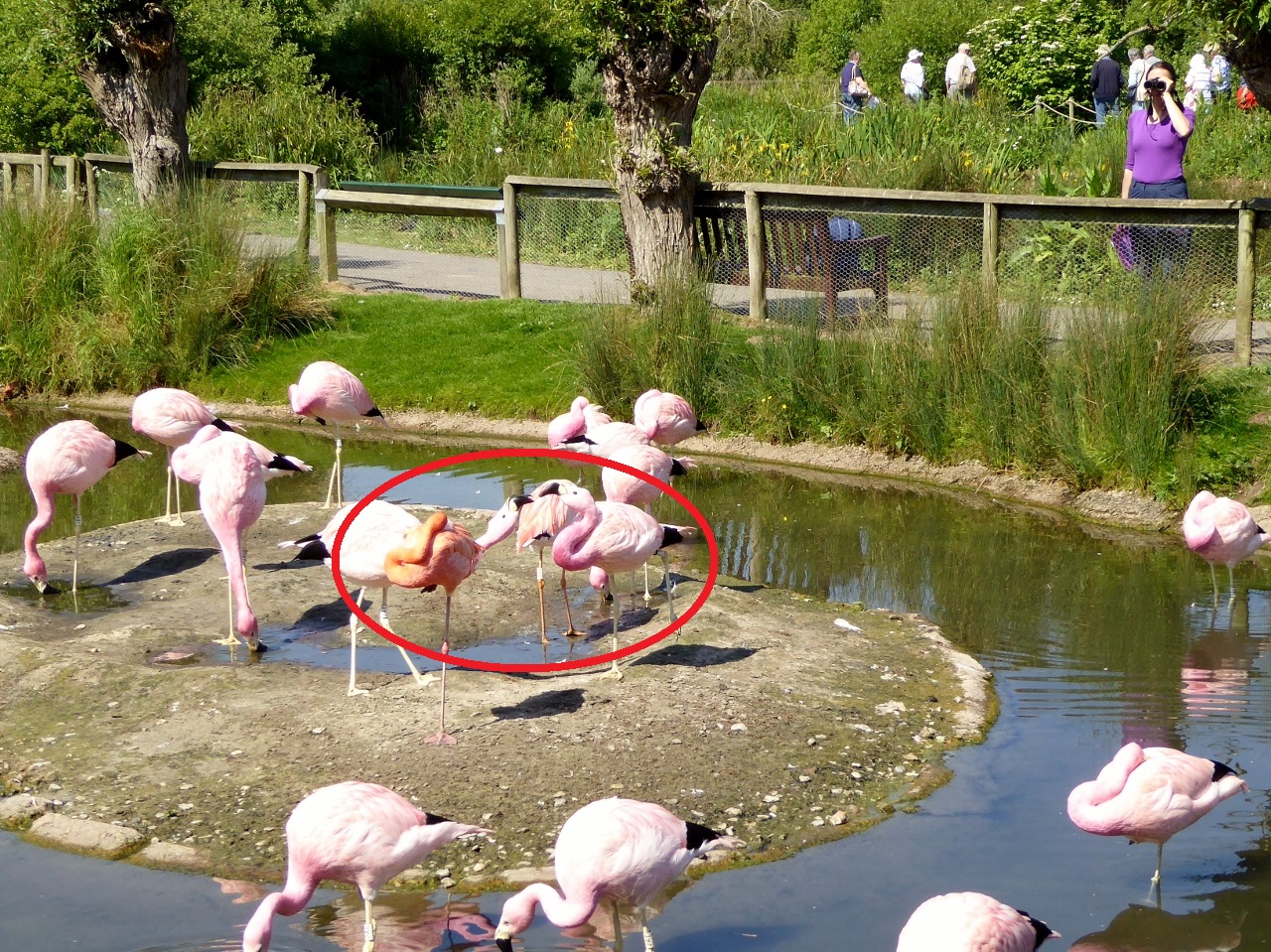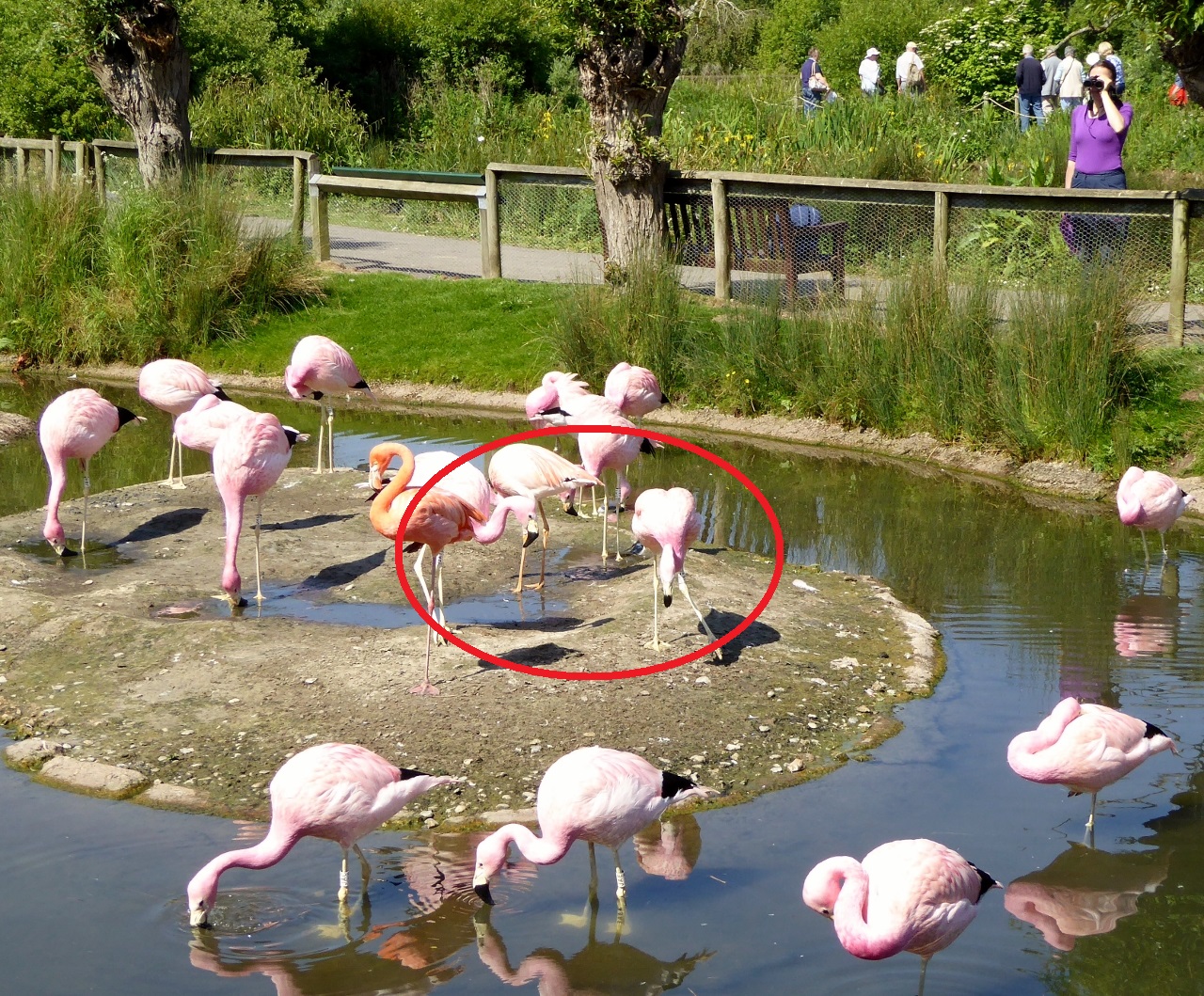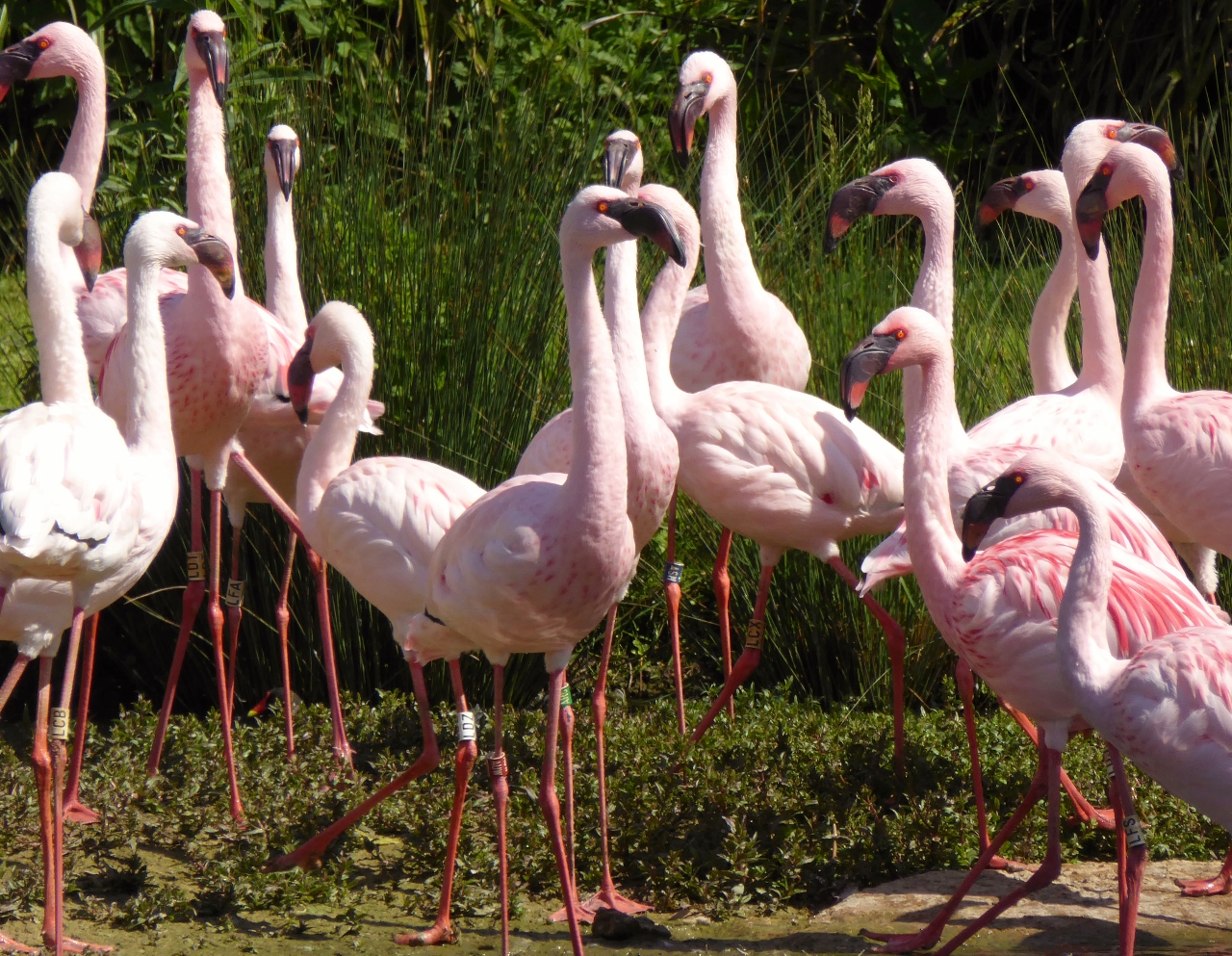Flamingo ninja...!? Science for summer 2017
Hello flamingo followers. At this time of year I normally try and write about the research that students are doing on the WWT Slimbridge flamingos. This year, University of Exeter MSc Animal Behaviour student Dimitrina is observing two flocks of Slimbridge birds to answer a particular question about bird-to-bird interactions within each group. So far, most of the work we have conducted on the flamingos has been looking at relationships based on space between birds (the closer individuals are to each other, the more likely they are to be friendly- see http://www.sciencedirect.com/science/article/pii/S0168159117300941 for an example of this research). What Dimitrina is investigating is what do flamingos actually do to each other. Like how monkeys groom one another or dogs will play fight- other social species actively engage with the individuals around them. What examples of this are seen, if at all, in a group of flamingos?
 Who is doing what to whom? Dimitrina alternates her observations between the Andean flamingos and the lesser flamingos.
Who is doing what to whom? Dimitrina alternates her observations between the Andean flamingos and the lesser flamingos.
A flamingo flock is a very organised affair. You only have to listen to the calls the birds make to get an idea that flamingos are engaged in different relationships with each other. Take this clip of the lesser flamingo group below. You can hear their louder, noisier greater flamingo cousins in the background, making a totally different sound to the chattering, whistling and shrill whistling of the lesser flamingos. As such, Dimitrina is looking at behaviours that give evidence to this flock organisation and flock structure. We looked in some of the bigger flocks, Caribbean and Chilean, last year and found that birds do direct certain social interactions to other, particular, birds. But you can imagine that in flocks of 130-150 birds, this is quite a challenge to follow. So by observing two smaller groups, we hope to be able to add some context to what we have a general idea about so far.
As a clue to what Dimitrina is looking out for, we have seen that flamingos will push into each other and how they do this seems deliberate. In fact, Dimitrina gave a brilliant impersonation of this to me the other day and said that it is like the bird that is doing the pushing tries to be stealthy and sneak up on the bird it wants to crash in to. And if it gets spotted, it will pretend that crashing into another flamingo is the last thing on its mind. I'm sure there's some flamingo sneaky ninja joke to be made here... See the series of photos below for what birds sometimes inflict on their flock mates.
A lesser flamingo on one leg is minding its own business. Another bird appearing from the left walks straight into it. The sleeping bird is awakened and looks grumpy, shouting in the direction of the bird that's done the pushing. Meanwhile, the pusher carries on its merry way. What is interesting / odd / a little strange about this is that the pushing flamingo could quite easily have walked around the pushed flamingo but didn't. What we want to know is whether this behaviour random, or do birds decide who they want to push into?
Dimitrina is recording the identity of birds engaged in social activities, like this pushing and shoving, to see if there is a pattern to who is doing what to whom. As an example in the photos below, a scuffle breaks out between two Andean flamingos, circled in red. If the birds are evenly matched, do they fight? If one is more aggressive than the other, does the other give way and concede its ground?
In this case, the flamingo on the right walks away. Clearly one bird was more powerful in this situation. Although we're not sure what the winner gains from this encounter. Maybe it cements its place in the flock hierarchy? When Dimitrina has finished her research at the end of summer, I will provide an update on what has been found out and what we think these behaviours might mean.
Dimitrina started her observations in April and continues them through to July. She will get to see how the flamingos' behaviour, colour and demeanour changes into and during the breeding season. This might have an important influence on their social relationships. You can see in the photo of the lesser flamingos, below, how bright orange their eyes are. A signal that it is the courtship season. More hormones, more carotenoids, means changes in who is friends with whom and how tolerant birds are of each other.
If you'd like to know more about these shoving, pushing and bumping flamingos, see the link here to an article that provides more information: https://wildfowl.wwt.org.uk/index.php/wildfowl/article/view/2629






